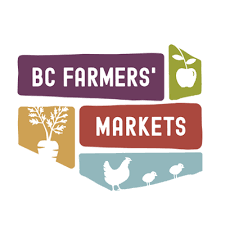What does it mean to be a locavore? And is it truly feasible? This is a question I have been asking myself over the last several months.
For years I have considered my eating practices on the upper echelon of health. Lots of greens, lots of fruits, lots of wholesome snacks, very little refined sugar. We regularly shop the farmers’ market. We try to support local as much as we can. We have a small patio garden through the summer months. My son and I have Sunday morning baking adventures to fill up on healthy, unprocessed snacks during the week. And my love for kombucha has become an ongoing, super successful, chemistry experiment in my pantry thereby reducing my carbon footprint.
But still, we have a long way to go.
Food citizenship, a buzzword in foodie circles, is the act of engaging in food-related behaviours that consider all aspects of the food – its affect on personal health; its effect on the environment; on animal welfare; and on sustainability of our local farmers. Its premise is knowing where our food is grown, how it is grown, and make consumption decisions accordingly. This applies everywhere – at the grocery store, in restaurants, and yes, even at our farmers’ markets. Essentially, we need to stop being passive food consumers, and start being advocates of our local food system.
But is it possible?
This winter, we have been challenged in this endeavour every which way we turn. The winter has diminished our farmers’ crops, if not obliterated them. We are lucky if we get local microgreens and potatoes at our bi-weekly market. Our fridge, I’m not going to lie, has produce from California, Mexico, Washington, and who knows where else. Not really locavore-like, at all. Sixty to seventy years ago, though, families regularly faced such hardships. Prior to industry taking over the shelves with its processed goods, nearly all foods were at the whim of environment. If the weather was not sustainable for fresh foods, they relied on stocked up preserves. They survived… and so shall we.
Market loot:
• Nutrigreens: – 1 5 oz bag microgreens $5
• Old Country Pierogi – 2 vegan burgers $8
• Lilise – 1 475 ml jar apple butter $10
• A Bread Affair – 1 loaf French Kiss bread $7
– 1 brown butter cookie $2
• Salt Dispensary – 1 2.5 oz cherry-smoked salts $8
Total spent: $40
The farmers’ market is brimming with preserves these days. I purchased the apple butter for my four-year-old who loves applesauce on its own, in his oatmeal, and mixed up in plain, Greek yogurt. We also used it in a few of our baking adventures to make avocado brownies, spinach “monster” cupcakes, and chickpea chocolate cookies as a way of reducing the refined sugar content. I was most surprised with how well the brownies turned out. The avocado was used as a healthy fats alternative, and the apple butter, along with pure maple syrup, as a sweetener. So gooey, so chocolatey, so not avocadoey.

The vegan patties were like none I have ever tasted. So many textures and flavours: crunchy with pumpkin seeds, sunflower seeds, chia seeds, and kaniwa (similar to quinoa, but with a crunchier texture); creamy with mashed yams and black beans; a little kick of spice; some smoky undertones;, and I think, but I am not 100% sure, there was cumin in the mix as well. I have determined to recreate this recipe on my own. A new market-fresh challenge, dare I say. First stop: sourcing out kaniwa in New Westminster.

A splurge of the shop was most definitely the salt. We did not need a flavoured salt, and frankly I had no idea what I would add it to. But it was intriguing. The most adventurous I usually get with salt is Himalayan sea salt. The Salt Dispensary had probably 30 flavours on its table, and you better believe I smelled each and every one of them before choosing the smoked cherry. The fellow at the stand suggested sprinkling it on tomatoes and avocados, or rubbing it onto meats, or sprinkling it onto a cheese plate. We did the tomatoes and avocado; sprinkled it onto salmon, over top of fried eggs on toast, and into a shrimp stir fry. The taste was lost in the stir fry; there were likely too many competing flavours. I preferred my salmon without. But on the avocado, tomato, and fried eggs, it was absolutely lovely – another tasty dimension.

At every table I went to, I talked to the farmers, the vendors, the owners. I learned about the processes used, and the ingredients sourced for the breads at A Bread Affair, I was told about the my loaf’s “peasant” origins, that it was a mix of whole rye and wheat fermented over three days to give it a slight tang. And I was heavily encouraged to pair it with either a hearty bowl of borscht, or a slab of Montreal smoked meat on top. I discovered that even in -20˚C weather, the microgreens growers tended to their greenhouse-grown crops every morning no matter how much they would have preferred the warmth of their beds. I also learned that the stuffed bag of microgreens I got had been harvested that morning prior to the market, giving them a solid 7-10 days of freshness in the fridge. I learned the apple butter included the apple skins to retain optimal sweetness. And the story of The Salt Dispensary first began with a man who had lost his job and had discovered a new set of creative juices with a wood plank and salt.
With every question I asked, with every producer-consumer relationship I made, with every purchasing decision, I grew closer to food citizenship.

